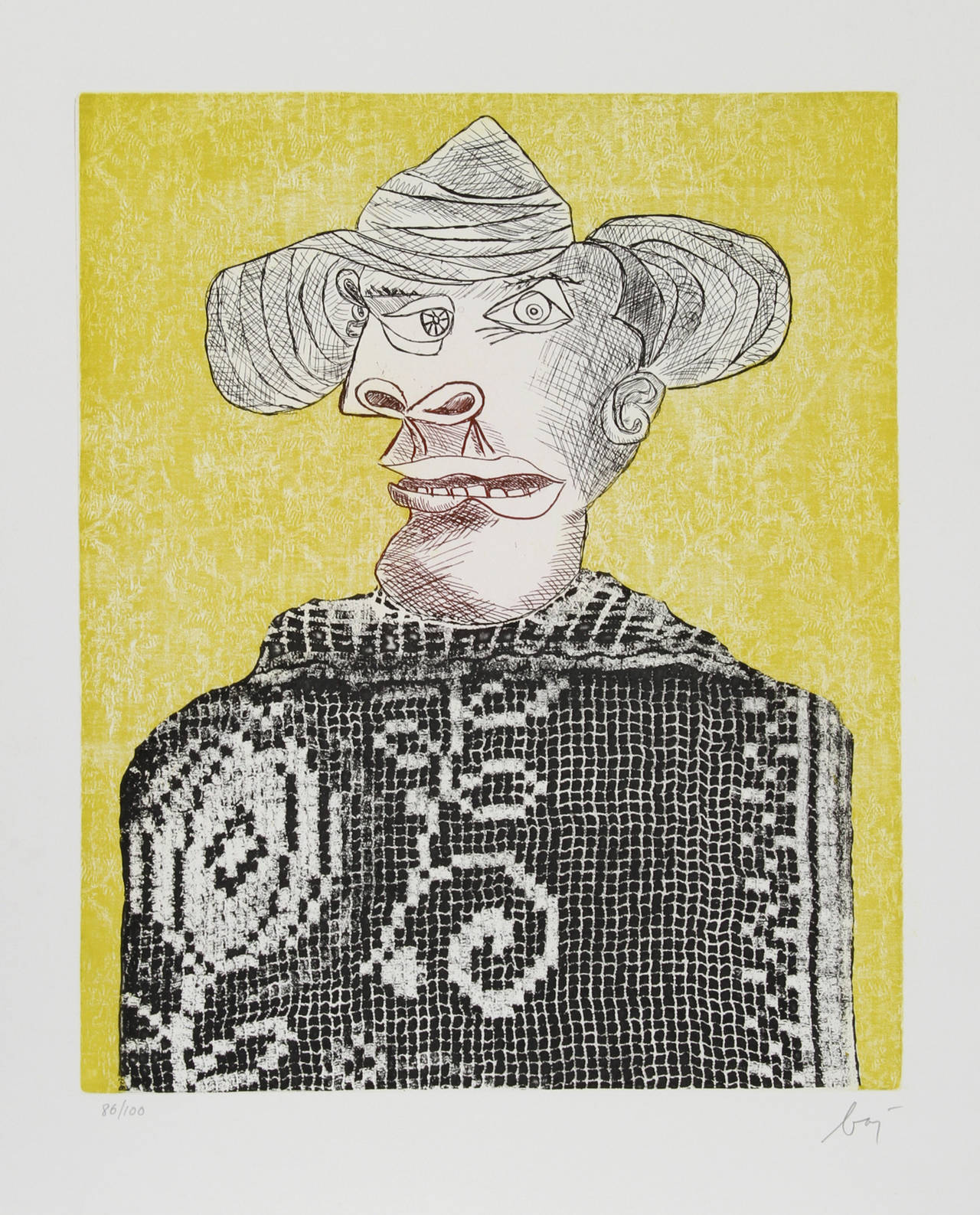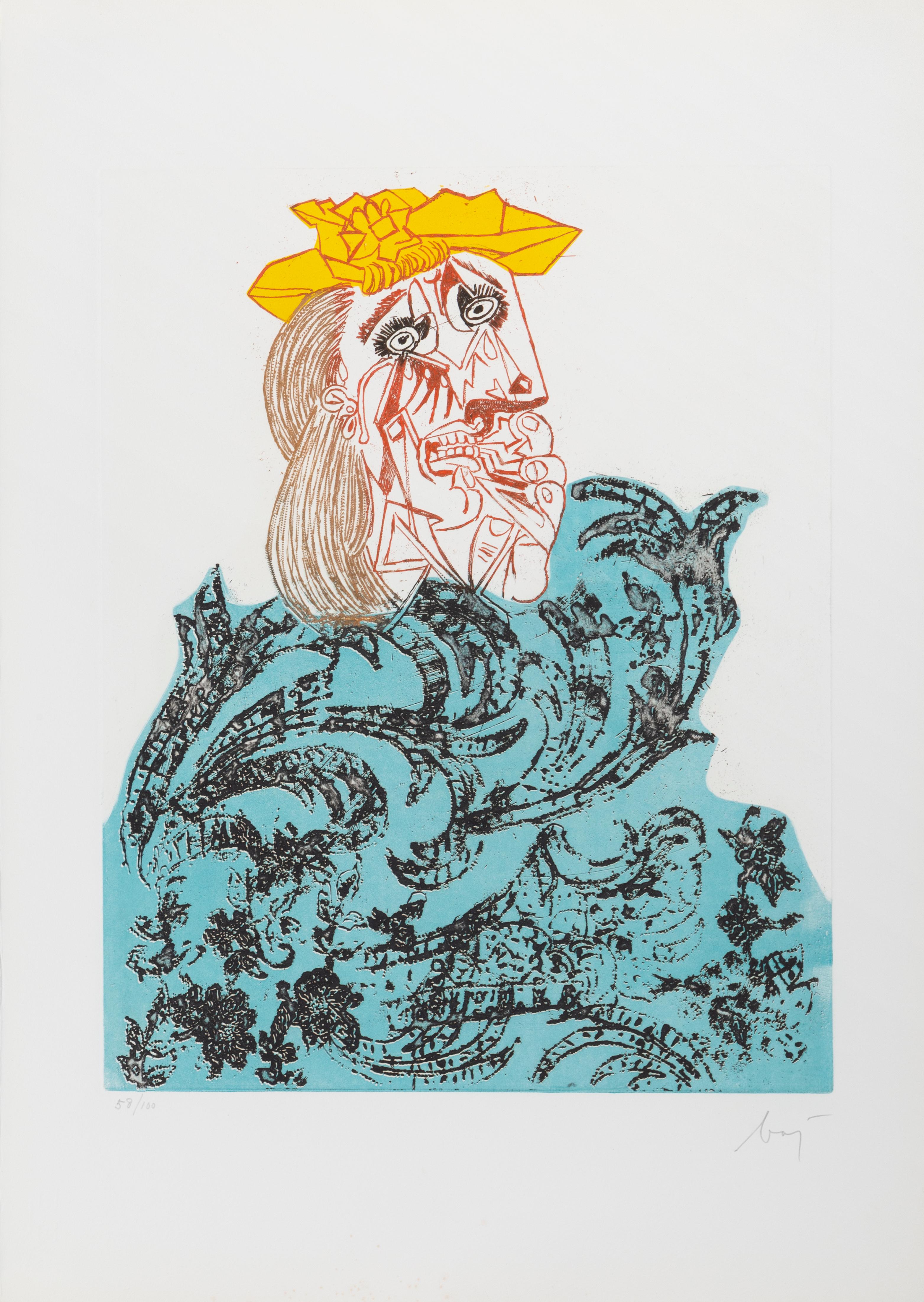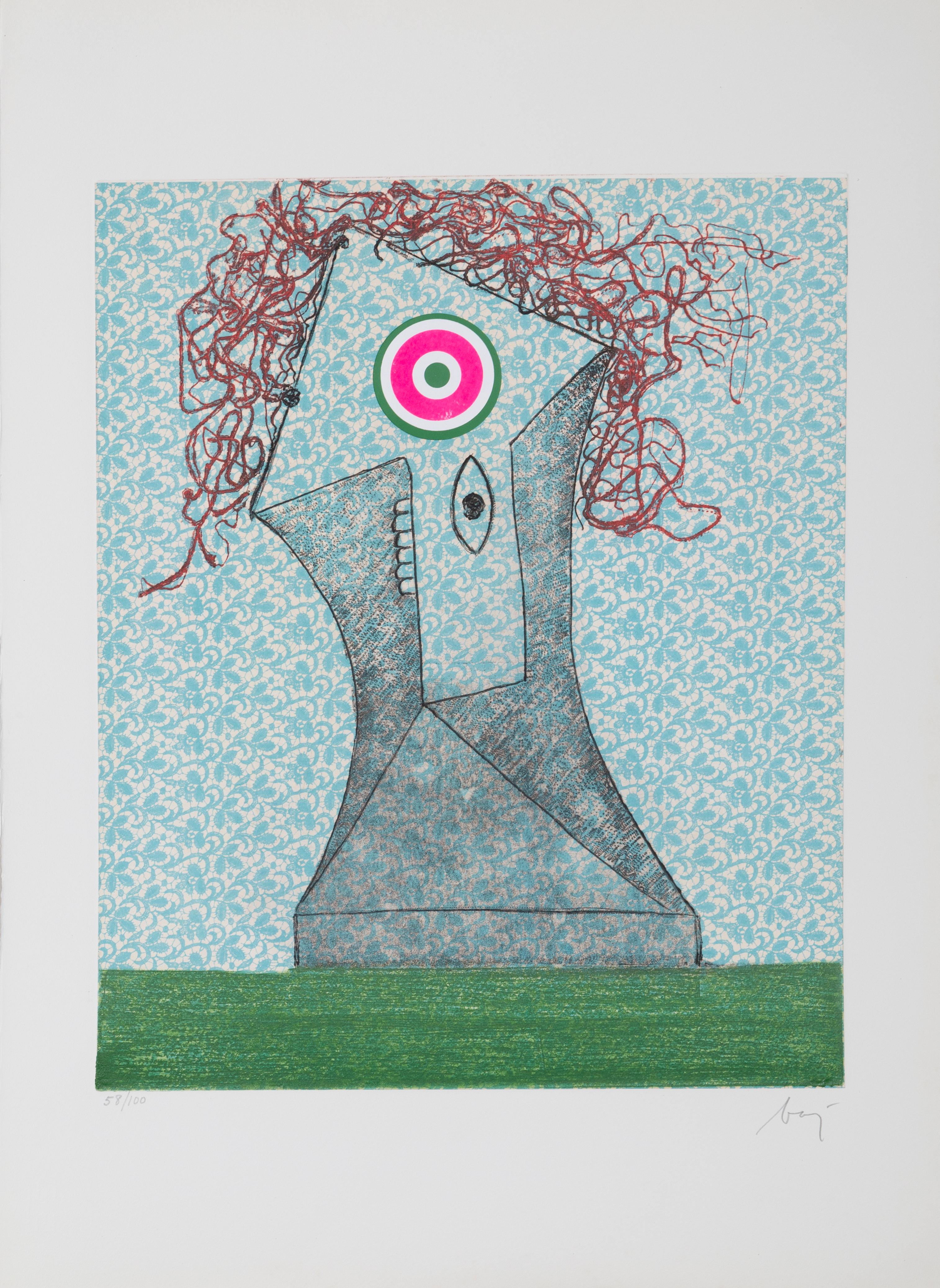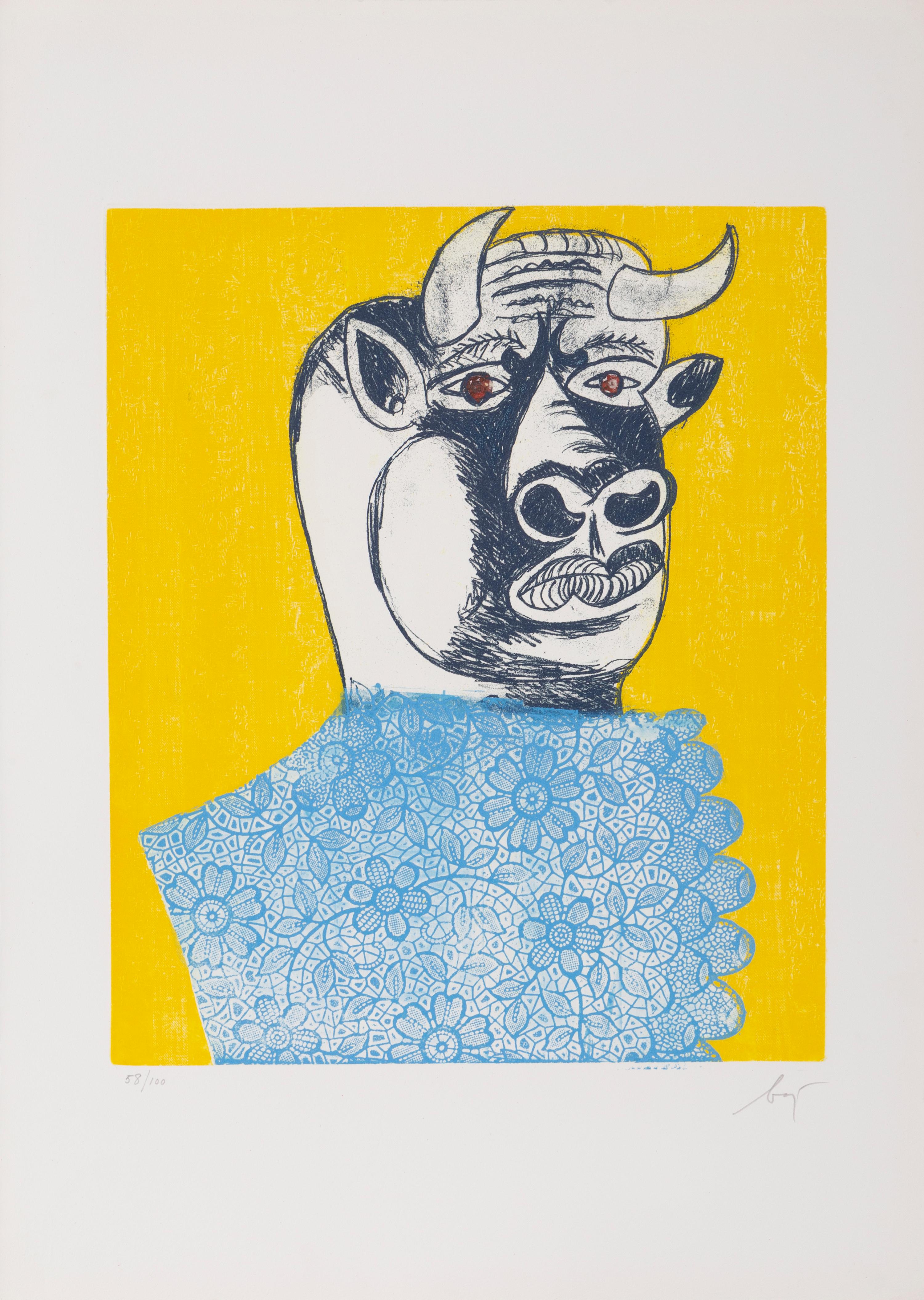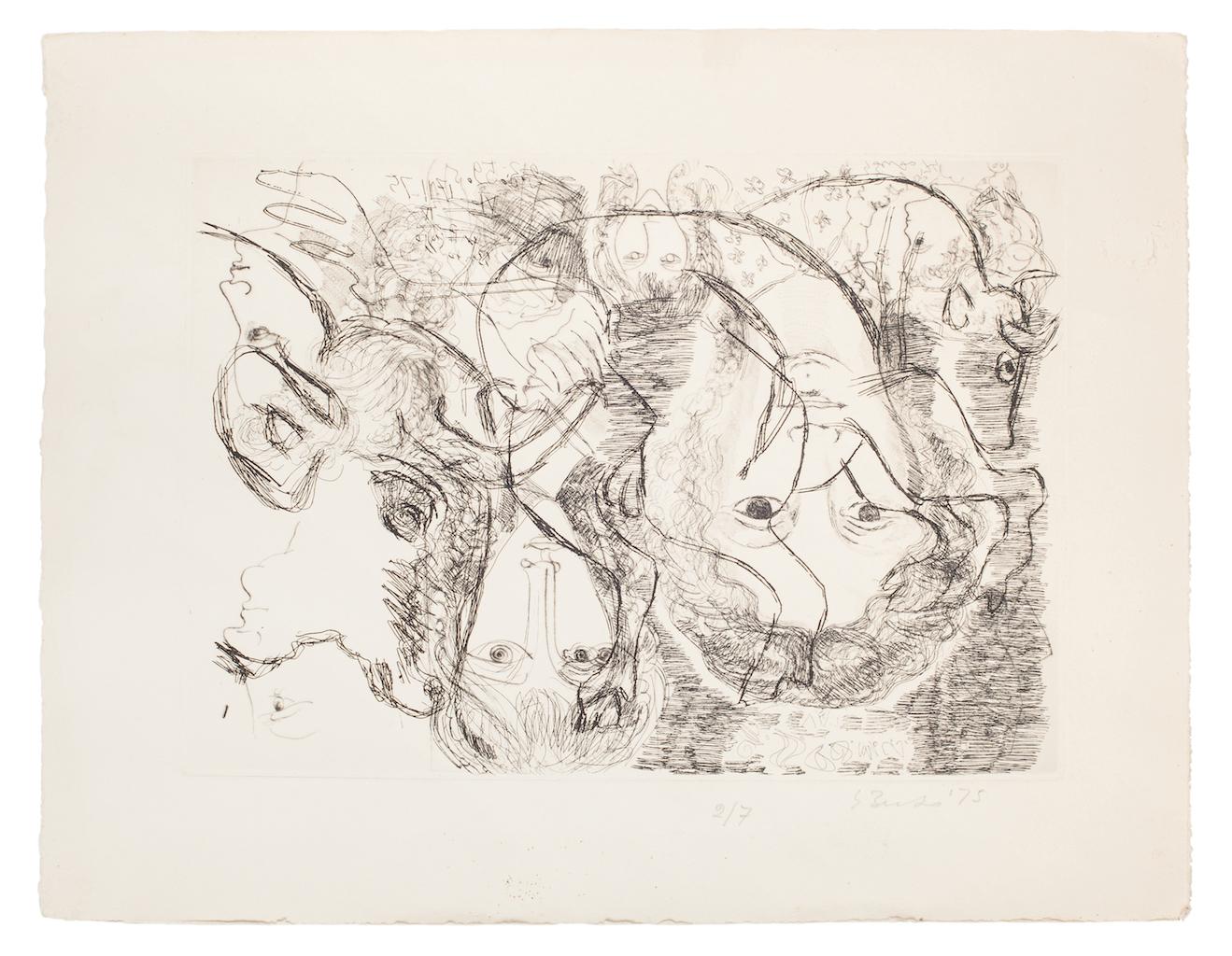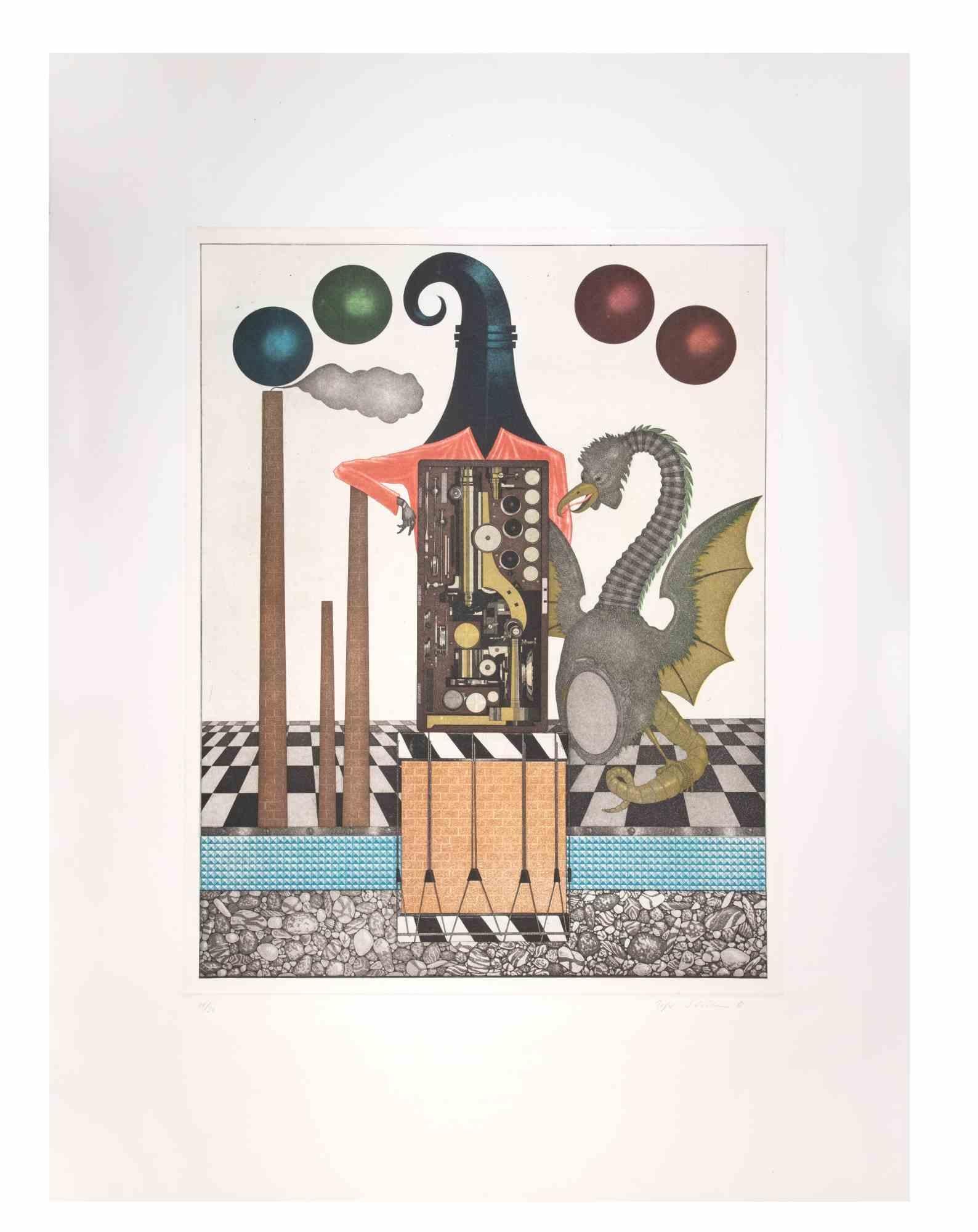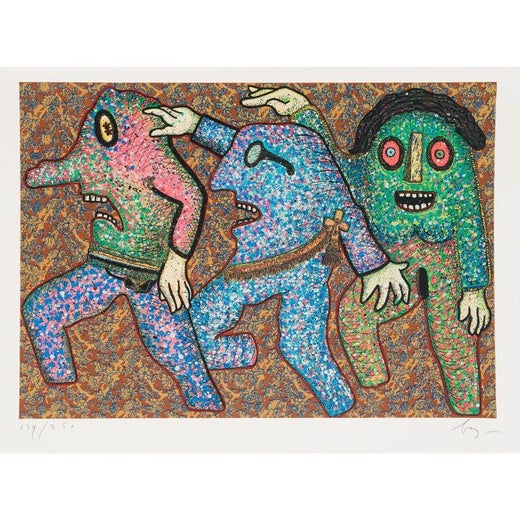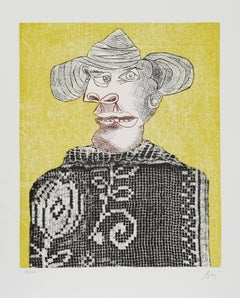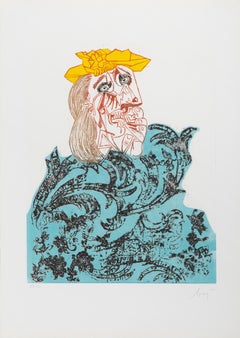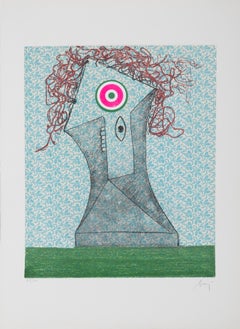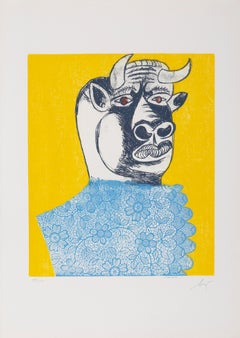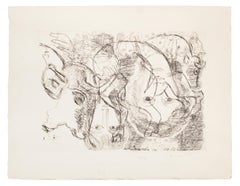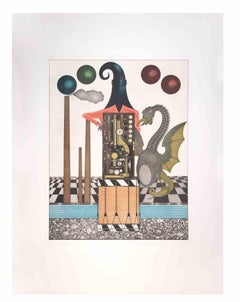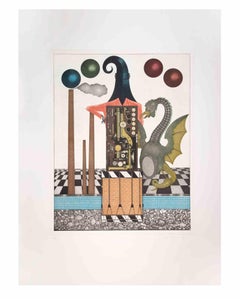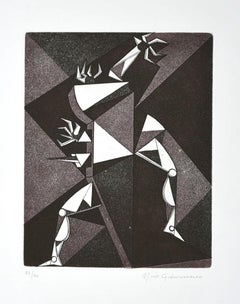Items Similar to Baj Chez Picasso 2, Aquatint Etching by Enrico Baj
Want more images or videos?
Request additional images or videos from the seller
1 of 5
Enrico BajBaj Chez Picasso 2, Aquatint Etching by Enrico Baj1969
1969
$4,500
£3,455.81
€3,960.31
CA$6,334.89
A$7,096.48
CHF 3,697.91
MX$86,562.35
NOK 46,991.96
SEK 44,310.07
DKK 29,558.68
About the Item
Artist: Enrico Baj, Italian (1924 - 2003)
Title: Baj Chez Picasso 2
Year: 1969
Medium: Aquatint Etching, Signed and numbered in pencil
Edition: 86/100
Image Size: 15 x 22 inches
Size: 19.5 in. x 28 in. (49.53 cm x 71.12 cm)
- Creator:Enrico Baj (1924-2003, Italian)
- Creation Year:1969
- Dimensions:Height: 19.5 in (49.53 cm)Width: 28 in (71.12 cm)
- Medium:
- Movement & Style:
- Period:
- Framing:Framing Options Available
- Condition:
- Gallery Location:Long Island City, NY
- Reference Number:1stDibs: LU466159052
Enrico Baj
Enrico Baj, born in Milan on October 31, 1924 and died in Vergiate on June 16, 2003, was an Italian painter, libertarian anarcho-pataphysician. In 1950, with the painter Sergio Dangelo, he founded the Nuclear Movement (or Movimento Arte Nucleare), considered the Italian equivalent of the CoBrA movement. In 1953, he approached the painter Asger Jorn with the aim of founding the International Movement for an imaginist Bauhaus and organized the International Ceramic Meetings of Albisola, in which the painters Matta and Roland Giguère took part. From 1955, he composed his paintings with the most heterogeneous elements such as pieces of glass, skeins of wool, mattress canvas, watch dials. That same year, with the writer Édouard Jaguer, he created the Italian magazine Il gesto. After meeting Mesens in London, Marcel Duchamp and Arturo Schwarz in New York, he met André Breton in Paris in 1962. From 1965, he began a series of collages representing ladies: Dame Ninette de Valois, 1974 and Generals in ceremonial costumes overloaded with decorations: Lieutenant John Talbot, First Earl of Shrewsbury.
About the Seller
4.9
Platinum Seller
Premium sellers with a 4.7+ rating and 24-hour response times
Established in 1979
1stDibs seller since 2014
3,070 sales on 1stDibs
Typical response time: 1 hour
- ShippingRetrieving quote...Shipping from: Long Island City, NY
- Return Policy
Authenticity Guarantee
In the unlikely event there’s an issue with an item’s authenticity, contact us within 1 year for a full refund. DetailsMoney-Back Guarantee
If your item is not as described, is damaged in transit, or does not arrive, contact us within 7 days for a full refund. Details24-Hour Cancellation
You have a 24-hour grace period in which to reconsider your purchase, with no questions asked.Vetted Professional Sellers
Our world-class sellers must adhere to strict standards for service and quality, maintaining the integrity of our listings.Price-Match Guarantee
If you find that a seller listed the same item for a lower price elsewhere, we’ll match it.Trusted Global Delivery
Our best-in-class carrier network provides specialized shipping options worldwide, including custom delivery.More From This Seller
View AllBaj Chez Picasso 3, Etching by Enrico Baj
By Enrico Baj
Located in Long Island City, NY
Artist: Enrico Baj, Italian (1924 - 2003)
Title: Baj Chez Picasso 3
Year: 1969
Medium: Aquatint Etching, Signed and numbered in pencil
Edition: 86/100
Image Size: 18.5 x 15 inch...
Category
1960s Cubist Portrait Prints
Materials
Etching
Baj Chez Picasso 1, Cubist Etching by Enrico Baj
By Enrico Baj
Located in Long Island City, NY
Artist: Enrico Baj, Italian (1924 - 2003)
Title: Baj Chez Picasso 1
Year: 1969
Medium: Aquatint Etching, Signed and numbered in pencil
Edition: 58/100
Image Size: 19.5 x 15.5 inches
...
Category
1960s Cubist Portrait Prints
Materials
Etching
Baj Chez Picasso 6, Etching by Enrico Baj
By Enrico Baj
Located in Long Island City, NY
Artist: Enrico Baj, Italian (1924 - 2003)
Title: Baj Chez Picasso 6
Year: 1969
Medium: Aquatint Etching with collage, Signed and numbered in pencil
Edition: 58/100
Image Size: 19.5 x...
Category
1960s Cubist Portrait Prints
Materials
Etching
Baj Chez Picasso 7, Cubist Etching by Enrico Baj
By Enrico Baj
Located in Long Island City, NY
Artist: Enrico Baj, Italian (1924 - 2003)
Title: Baj Chez Picasso 7
Year: 1969
Medium: Aquatint Etching, Signed and numbered in pencil
Edition: 58/100
Image Size: 19.5 x 15.5 inches
...
Category
1960s Cubist Portrait Prints
Materials
Etching
$3,600 Sale Price
20% Off
Sextus from The Romans, Cubist Aquatint Etching by Enrico Baj
By Enrico Baj
Located in Long Island City, NY
Artist: Enrico Baj, Italian (1924 - 2003)
Title: Sextus Varius Avitus Bassianus Heliogabalus
Year: 1972
Medium: Aquatint Etching with Collage, Signed and numbered in pencil
Edition: ...
Category
1970s Conceptual Portrait Prints
Materials
Mixed Media, Etching, Aquatint
Primitive Image (13), Modern Etching and Aquatint by Akio Wakasa Miyakawa
Located in Long Island City, NY
Akio Wakasa Miyakawa - Primitive Image (13), Medium: Etching and Aquatint on Arches, signed, titled and numbered in pencil, Edition: 3/10, Image Size: 11.5 x 19.5 inches, Size: 15 ...
Category
20th Century Modern Abstract Prints
Materials
Etching, Aquatint
You May Also Like
Composition - Original Etching by Gian Paolo Berto - 1975
Located in Roma, IT
Composition of Figures is an original etching and drypoint print on paper realized by Gian Paolo Berto, in 1975.
Good conditions except for a small damaged part of the whitish frame...
Category
1970s Contemporary Abstract Prints
Materials
Etching
Basilisk - Aquatint and Etching by Fifo Stricker - 1981
Located in Roma, IT
Basilisk is a contemporary artwork realized by the artist Fifo Stricker in 1985.
Mixed colored aquatint and etching.
Hand signed and dated by the arti...
Category
1980s Contemporary Figurative Prints
Materials
Etching
Basilisk - Aquatint and Etching by Fifo Stricker - 1981
Located in Roma, IT
Basilisk is a contemporary artwork realized by the artist Fifo Stricker in 1985.
Mixed colored aquatint and etching.
Hand signed and dated by the arti...
Category
1980s Contemporary Abstract Prints
Materials
Etching
Composition - Etching by Mario Gianmarco - Late 20th Century
Located in Roma, IT
Composition is an original etching, realized by the artist Mario Gianmarco.
Hand-signed on the lower right.
Numbered, Edition 67/70.
The artwork represented skilfully with geometr...
Category
Late 20th Century Abstract Abstract Prints
Materials
Paper, Etching
Composition - Original Etching on Paper by Gian Paolo Berto - 1975
Located in Roma, IT
Composition is an original Etching realized by Gian Paolo Berto in 1975.
Hand signed, sated and numbered by the artist with pencil on the lower right corner.
Good condition on a wh...
Category
1970s Contemporary Figurative Prints
Materials
Paper, Etching
Basilisk - Aquatint and Etching by Fifo Stricker - 1981
Located in Roma, IT
Basilisk is a contemporary artwork realized by the artist Fifo Stricker in 1985.
Mixed colored aquatint and etching.
Hand signed and dated by the artist on the lower right margin....
Category
1980s Contemporary Figurative Prints
Materials
Etching
Read More
Romare Bearden’s Humanity Infuses His Bright, Bold Art
Through collage, painting and printmaking, the artist foregrounded Black life in America in revolutionary new ways.
Chryssa’s 1962 Neon Sculpture Was Way ahead of the Art-World Curve
By working with lettering, neon and Pop imagery, Chryssa pioneered several postmodern themes at a time when most male artists detested commercial mediums.
More Ways To Browse
Blue Dog Tie
George Rodrigue Top Dog
Letterpress Machine
Oiseaux De Paradis
Vintage Beagle Art
William Woodhouse
1964 Olympics Poster
American Trotting Horses
H B Warren
Vintage Basset Hound Art
Vintage Stag Prints
Blue Dog Tiffany
Genevieve Antiques
Jennifer Beals
Salvador Dali Elephant
Vintage Jewelry Honolulu
Warhol Cathedral
Warhol Cow
